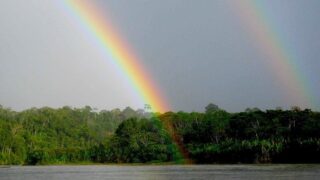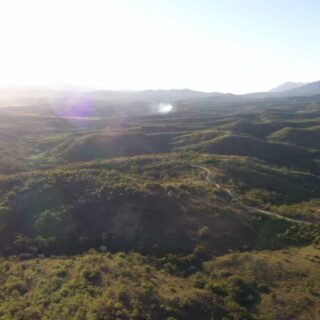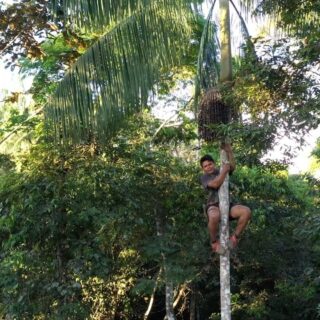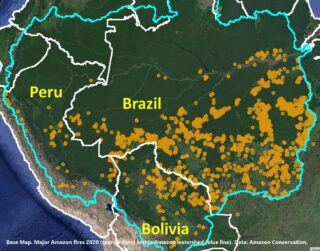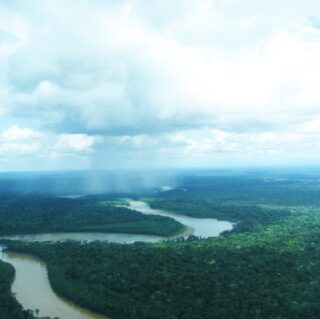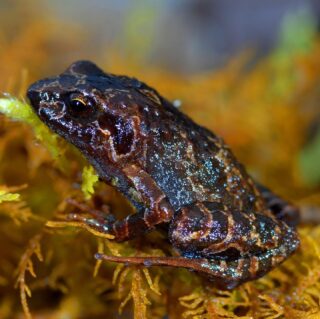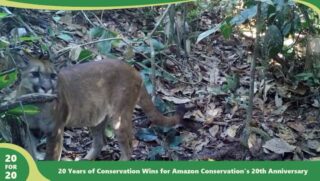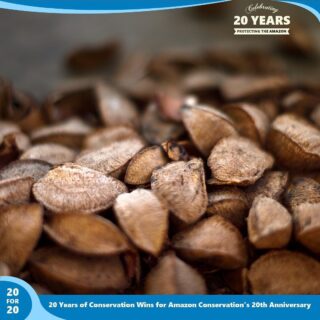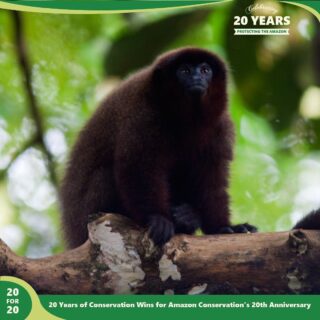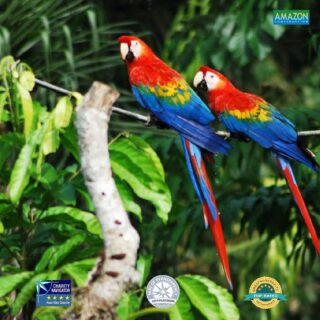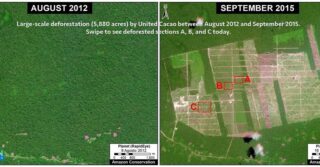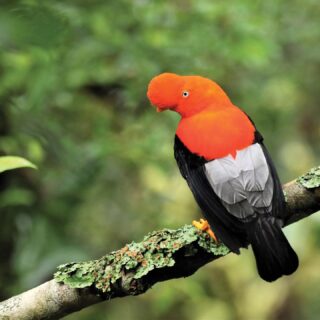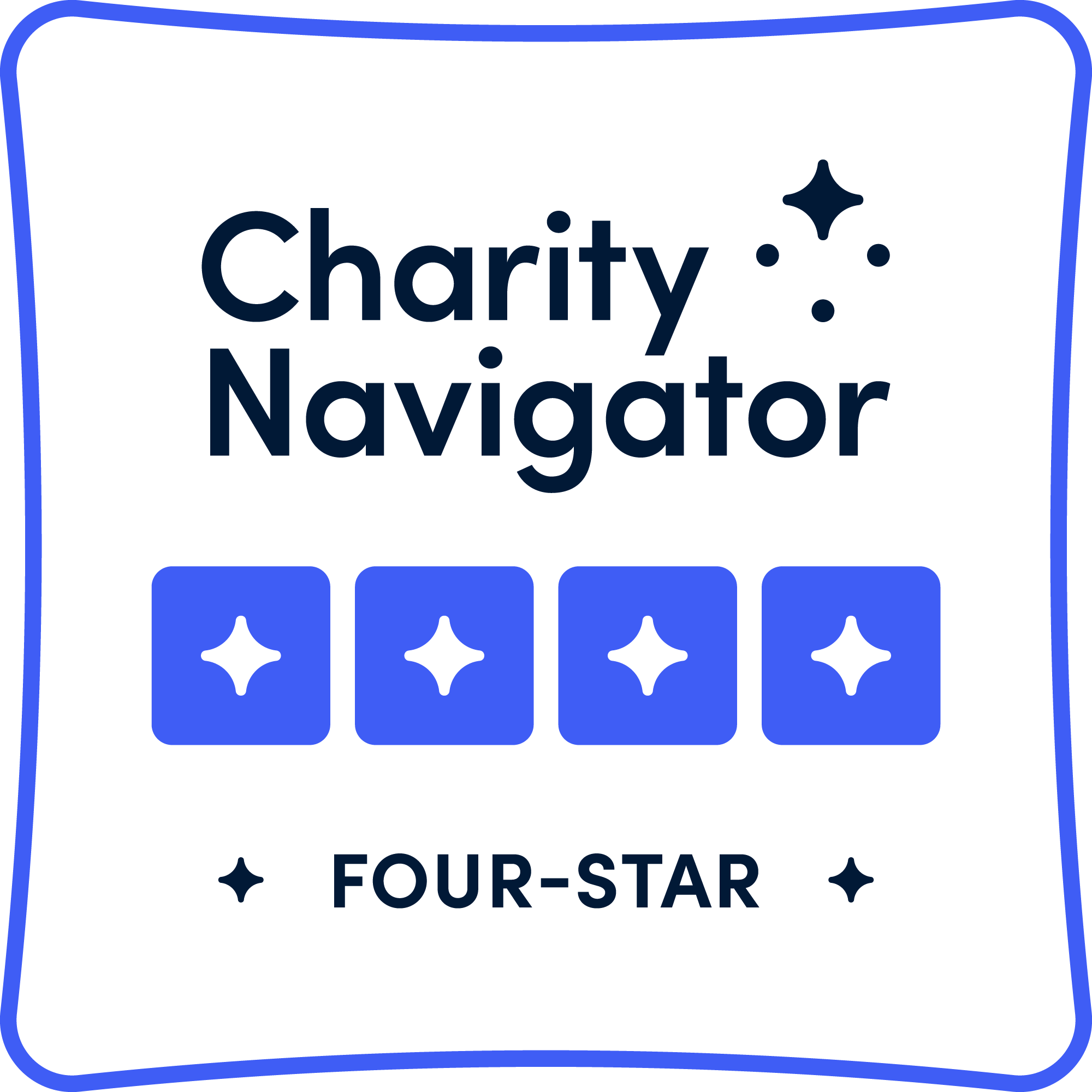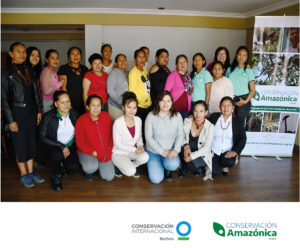
On December 11th, our Bolivian sister organization Conservación Amazónica – ACEAA coordinated the first-ever meeting for the indigenous women’s exchange of experiences focused on entrepreneurship. Women from 4 indigenous nations (Tacana, Leco, Mosetén, and Chiquitano) in the lowlands of Bolivia shared their knowledge about the management of their territories, opportunities, and challenges they face as women in different leadership positions in their communities.
This event was organized to strengthen the leadership of indigenous women as essential social actors in forest conservation. As discussed during the event, many prioritize activities related to caring for their families, thus emphasizing the importance of creating a safe environment. Among their communities, they also play the role of transmitter and preserver of culture, and by understanding this crucial social role of women, their representation and position in leadership is essential for maintaining balanced social development that coexists with the environment (in this case, the forest).
 However, for women to have this leadership role, they need economic independence to support themselves and their families. For this reason, this event also had an entrepreneurship focus to strengthen their knowledge on how to establish a business and create a network to support the enrichment and experiences they share mutually. The chiquitano women from Palmarito de la Frontera Women’s Association Searching for New Horizons shared their experience with their venture with Amazonian Cusi oil, how they work among all the women, the different roles they have agreed upon, and the potential and growth that they had due to the support of organizations. The participants also received guidance from a specialist who trains and strengthens the skills of artisans and indigenous peoples by understanding cultural research, and product development, and creating a dynamic methodology adapted to their functionality.
However, for women to have this leadership role, they need economic independence to support themselves and their families. For this reason, this event also had an entrepreneurship focus to strengthen their knowledge on how to establish a business and create a network to support the enrichment and experiences they share mutually. The chiquitano women from Palmarito de la Frontera Women’s Association Searching for New Horizons shared their experience with their venture with Amazonian Cusi oil, how they work among all the women, the different roles they have agreed upon, and the potential and growth that they had due to the support of organizations. The participants also received guidance from a specialist who trains and strengthens the skills of artisans and indigenous peoples by understanding cultural research, and product development, and creating a dynamic methodology adapted to their functionality.
Based on the previous analysis of their territory management, sustainable practices, and the potential use of the non-timber forest products for entrepreneurship, many of these women also identified and presented the threats that surround them, such as activities related to mining which contaminate bodies of water and affect the overall health of indigenous families. Furthermore, forest fires caused by uncontrolled burning seriously affected parts of their land and the forest, flora, and wild fauna part of its identity, especially in 2023. These losses combined with the constant threats have an impact on the lives of indigenous women and their families in their daily relationship with their territories, reflecting their vulnerability to these threats.
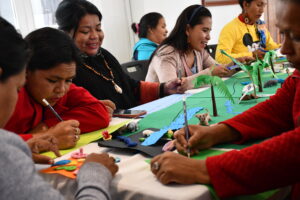 Aside from environmental threats, many of the women also reflected on their community norms that continue to make women’s rights invisible, as well as an analysis of the historical role of indigenous women participating in the fight for land, territory, natural resources, and for the self-determination of their people. While the women of Tacana II recognized that they had support from the men of their communities to exercise leadership as women, other participants shared that it continues to be a challenge to demonstrate the importance of women exercising these leadership roles and representing the voices of other women.
Aside from environmental threats, many of the women also reflected on their community norms that continue to make women’s rights invisible, as well as an analysis of the historical role of indigenous women participating in the fight for land, territory, natural resources, and for the self-determination of their people. While the women of Tacana II recognized that they had support from the men of their communities to exercise leadership as women, other participants shared that it continues to be a challenge to demonstrate the importance of women exercising these leadership roles and representing the voices of other women.
After two successful days of discussion and training, these women decided to form a Network of Indigenous Women Entrepreneurs, allowing them to continue strengthening their leadership, and open doors to opportunities for more women and girls. Despite a few obstacles, they plan to continue the fight for equal rights between men and women. As many of the women expressed their gratitude for the coordination of this event and the opportunity to meet and get to know each other, they also asked that the NGOs “not forget” about them or their territories, ambitions, and their desire to continue strengthening this network and the established ties.


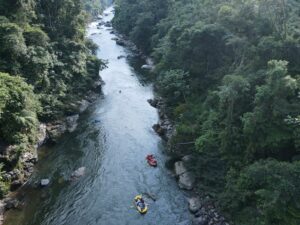
 The environmental news platform
The environmental news platform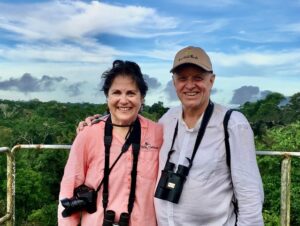 As we embark on a new year, we hope your restored energy and fresh beginning bring with them a renewed sense of purpose and inspiration for our planet. For those who are passionate about the environment and the conservation of the Earth’s most vital ecosystems, the Amazon stands as a beacon of both beauty and urgency. Retired conservationist Charles Duncan and retired family doctor Laura Blutstein recently shared what inspires them most about Amazon Conservation – the sheer scale and impact of the work.
As we embark on a new year, we hope your restored energy and fresh beginning bring with them a renewed sense of purpose and inspiration for our planet. For those who are passionate about the environment and the conservation of the Earth’s most vital ecosystems, the Amazon stands as a beacon of both beauty and urgency. Retired conservationist Charles Duncan and retired family doctor Laura Blutstein recently shared what inspires them most about Amazon Conservation – the sheer scale and impact of the work. 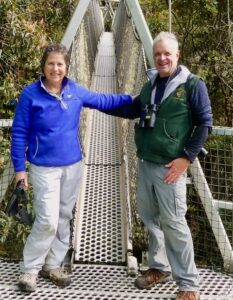 After a 15-year career in the conservation of migratory birds, Charles can attest to the need for a pragmatic approach to conservation. For him, the scale and approach of Amazon Conservation’s work gives him confidence in his support: “It’s that overarching strategy of science, community action, and on-the-ground activity that says to me, these people have thought about this. If I can add my grain of sand to the mountain they’re building, I want to do that.”
After a 15-year career in the conservation of migratory birds, Charles can attest to the need for a pragmatic approach to conservation. For him, the scale and approach of Amazon Conservation’s work gives him confidence in his support: “It’s that overarching strategy of science, community action, and on-the-ground activity that says to me, these people have thought about this. If I can add my grain of sand to the mountain they’re building, I want to do that.”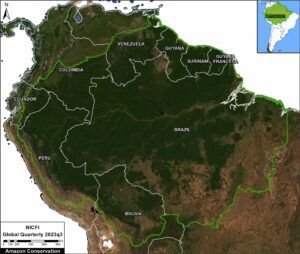 In March 2015, Monitoring of the Andean Amazon Program (MAAP) launched its first-ever report taking a look at the escalating gold mining deforestation in the Peruvian Amazon. Over the past 8 years, MAAP has continued to provide vital information via the latest technology to raise awareness and inspire solutions to protect one of the planet’s most vital ecosystems.
In March 2015, Monitoring of the Andean Amazon Program (MAAP) launched its first-ever report taking a look at the escalating gold mining deforestation in the Peruvian Amazon. Over the past 8 years, MAAP has continued to provide vital information via the latest technology to raise awareness and inspire solutions to protect one of the planet’s most vital ecosystems. 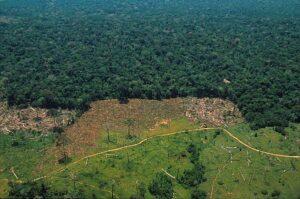 Through our Monitoring of the Andean Amazon Program (MAAP), we’ve been able to work with indigenous groups, local communities, and government agencies across the Amazon to share vital information on nature crimes and illegal deforestation. This year we supported 5 major government interventions against illegal gold mining in both the Peruvian and Ecuadorian Amazon. For example, on June 6, 2023, the National Police, the Navy, and the Specialized Environmental Prosecutor’s Office of Madre de Dios in Peru carried out a
Through our Monitoring of the Andean Amazon Program (MAAP), we’ve been able to work with indigenous groups, local communities, and government agencies across the Amazon to share vital information on nature crimes and illegal deforestation. This year we supported 5 major government interventions against illegal gold mining in both the Peruvian and Ecuadorian Amazon. For example, on June 6, 2023, the National Police, the Navy, and the Specialized Environmental Prosecutor’s Office of Madre de Dios in Peru carried out a This past year, with support from our Bolivian sister organization
This past year, with support from our Bolivian sister organization 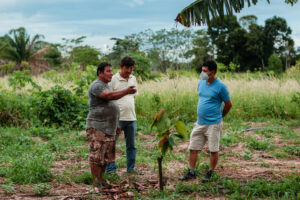 Our sister organization
Our sister organization 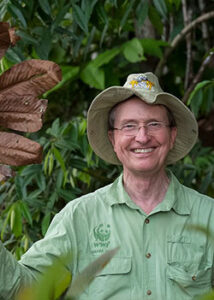 Thanks to funding from the Gordon and Betty Moore Foundation and the Fiddlehead Foundation, our
Thanks to funding from the Gordon and Betty Moore Foundation and the Fiddlehead Foundation, our 
 Thanks to your support, you are helping us build climate resilience in the Amazon by strengthening healthy and biodiverse wildlife populations and ensuring long-term forest health to withstand the worst impacts of climate change. Your contributions help us continue to improve our programs that protect jaguar habitat and populations, track forest and wildlife health, and host education programs with local communities to train local people in how to safely mitigate human-jaguar conflicts and sustainably manage local forests for healthy jaguar populations.
Thanks to your support, you are helping us build climate resilience in the Amazon by strengthening healthy and biodiverse wildlife populations and ensuring long-term forest health to withstand the worst impacts of climate change. Your contributions help us continue to improve our programs that protect jaguar habitat and populations, track forest and wildlife health, and host education programs with local communities to train local people in how to safely mitigate human-jaguar conflicts and sustainably manage local forests for healthy jaguar populations.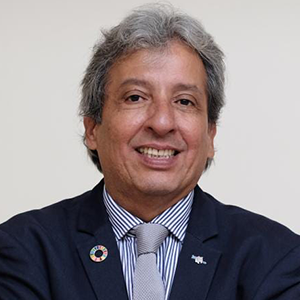 This year’s COP28 (United Nations Climate Change Conference), held in Dubai from November 30th to December 12th, brought together more than 190 governments to discuss global climate action. One of our board members,
This year’s COP28 (United Nations Climate Change Conference), held in Dubai from November 30th to December 12th, brought together more than 190 governments to discuss global climate action. One of our board members, 


 In a region with limited training, knowledge, and tools to prevent or combat fires that escape into forests, controlling fires is critical to minimize their damage to the greater forest and local communities. In response to ongoing droughts and illegal deforestation in the Beni Department in Bolivia, Abraham Pache Canchi, an Indigenous park guard is leading local fire prevention workshops to help local communities and governments be better prepared to swiftly respond to fires.
In a region with limited training, knowledge, and tools to prevent or combat fires that escape into forests, controlling fires is critical to minimize their damage to the greater forest and local communities. In response to ongoing droughts and illegal deforestation in the Beni Department in Bolivia, Abraham Pache Canchi, an Indigenous park guard is leading local fire prevention workshops to help local communities and governments be better prepared to swiftly respond to fires. The
The